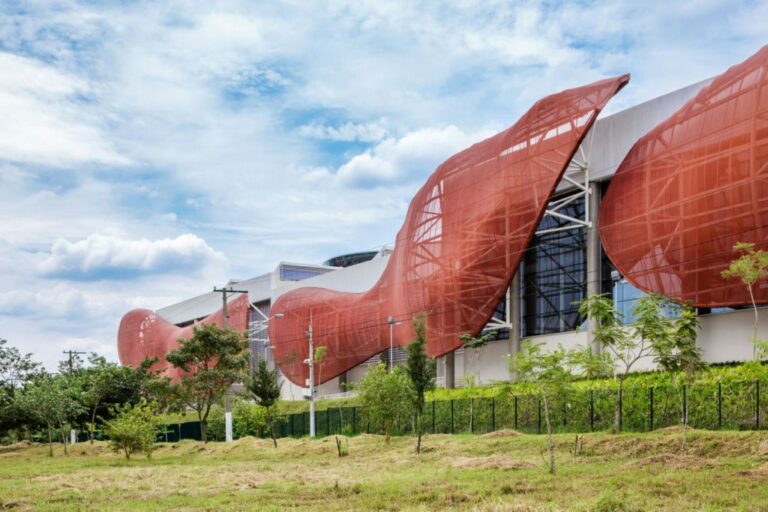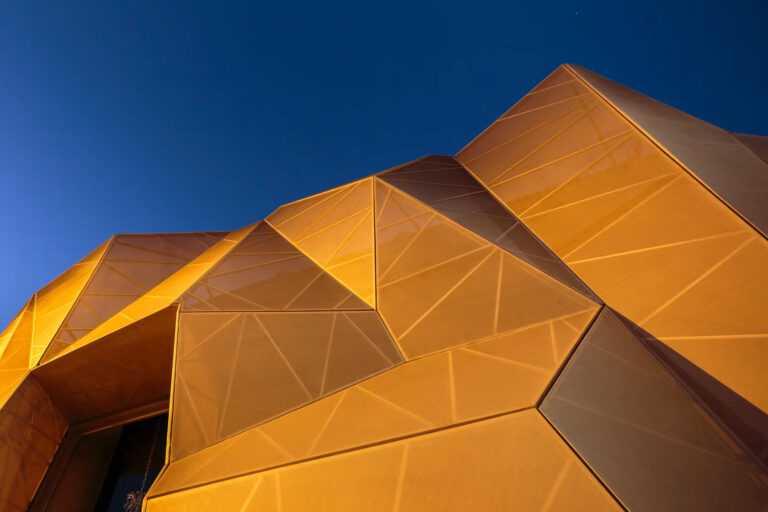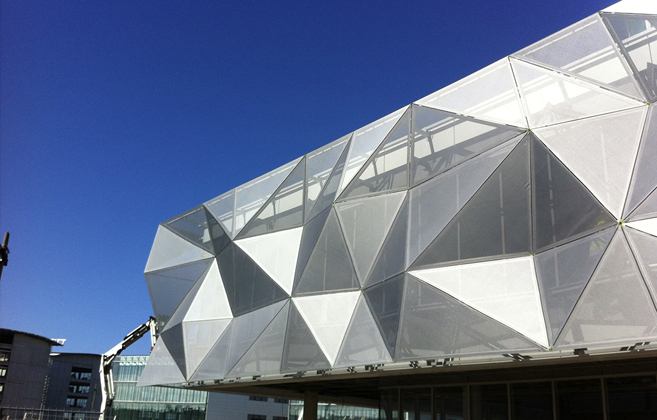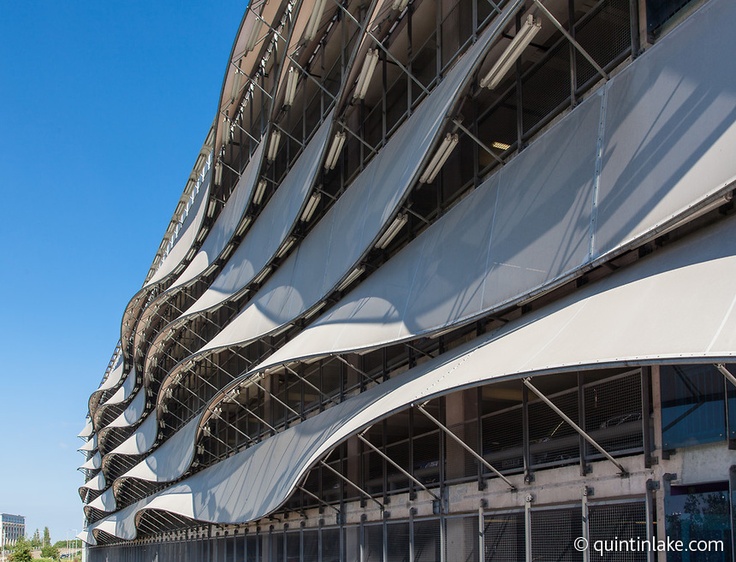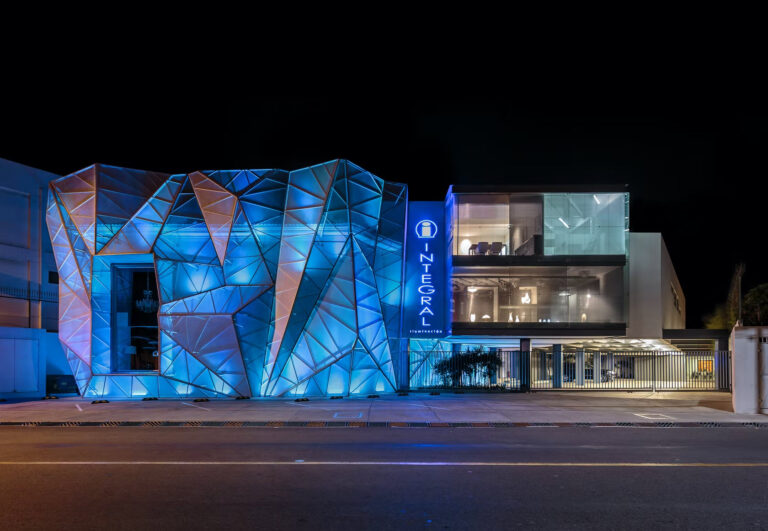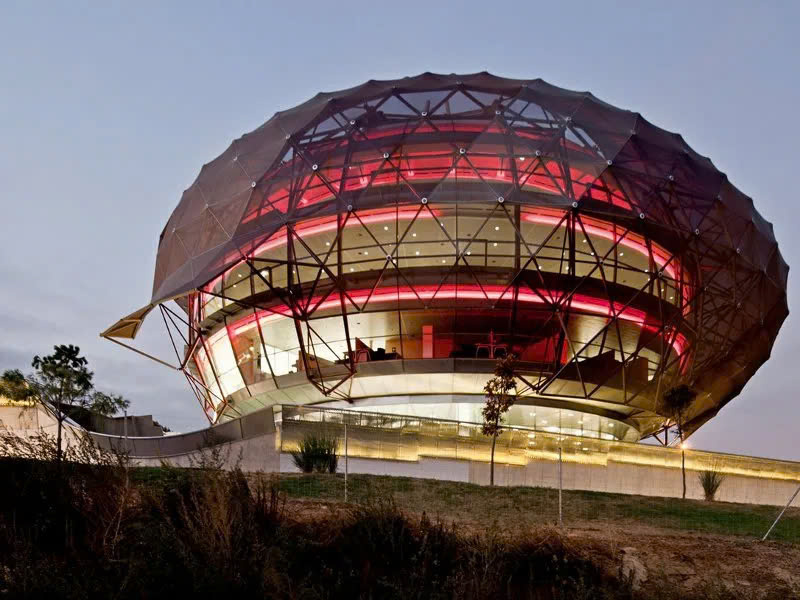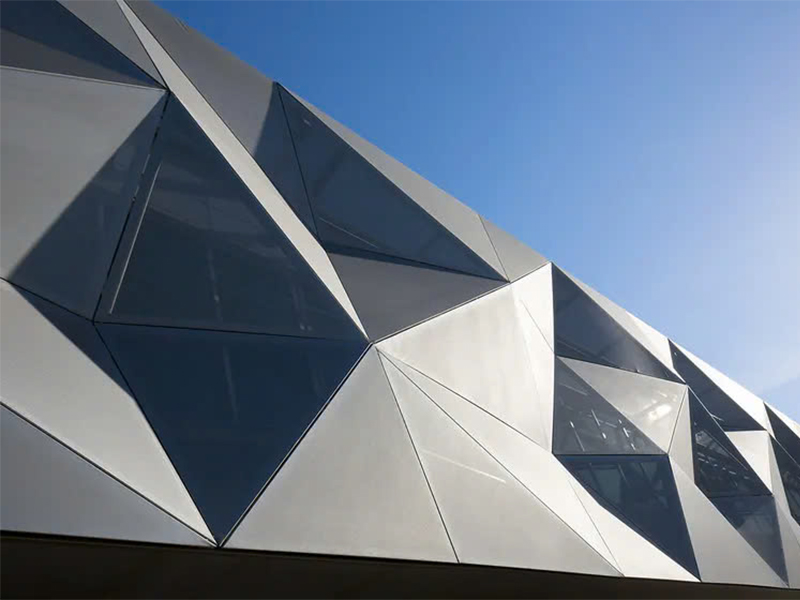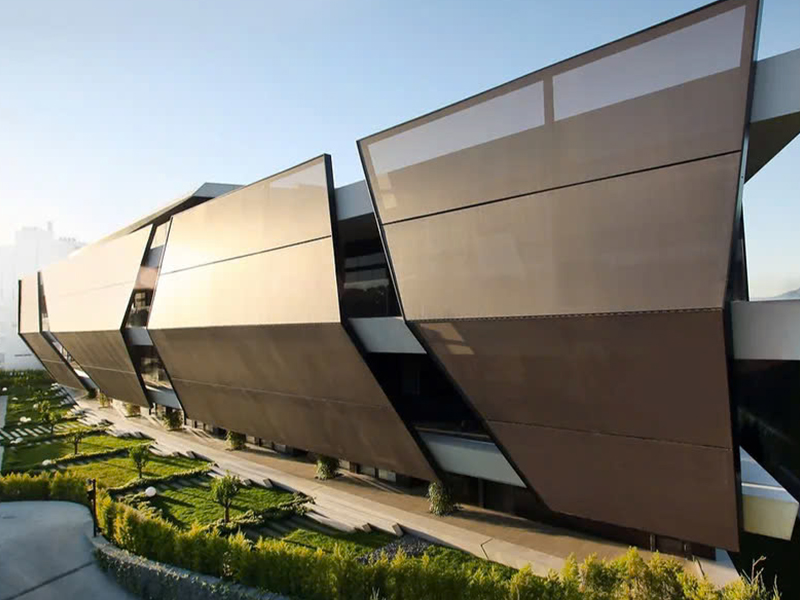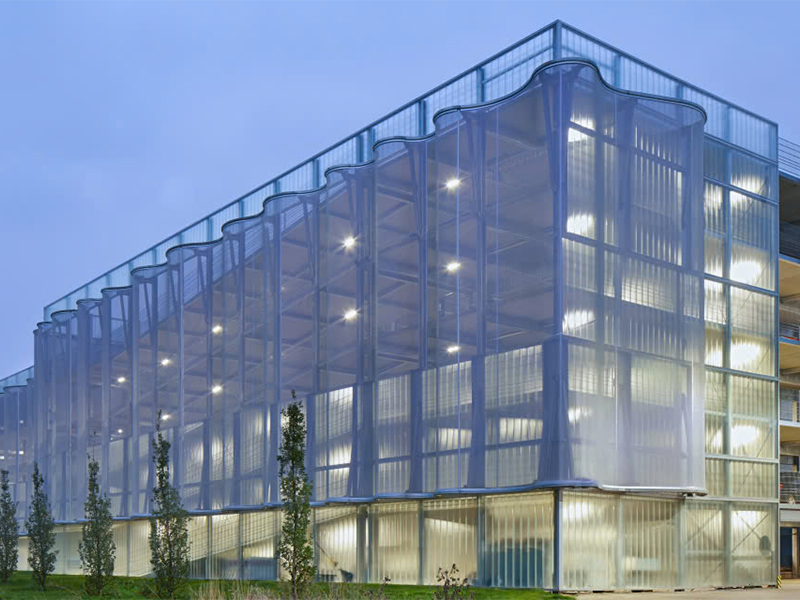Current Situation and Solution: Understanding Fabric Facade – Modern architectural facade solution
Fabric Facade, also known as fabric facade, is an advanced architectural solution that uses high-tech fabric materials to cover the exterior of a building. This is an alternative to traditional facade systems such as glass, concrete, or metal, providing many outstanding advantages in terms of weight, design flexibility, and energy efficiency. With its ability to insulate, reduce noise, and unique aesthetic value, Fabric Facade is becoming increasingly popular in contemporary architectural projects.
Technical Requirements & Context Analysis
The modern architectural context places increasing demands on material performance and environmental adaptability. Traditional facade solutions are often limited by heavy weight, high construction costs, and poor temperature control, especially in areas with harsh climates. The search for a lightweight, sustainable material that can regulate temperature and natural light while providing high aesthetic value is an urgent technical requirement. Fabric Facade was born as a comprehensive solution to meet these requirements, providing the ability to optimize energy efficiency and create flexible architectural forms.
Technical Solutions and Implementation Process
Fabric Facade solution is built on the foundation of high-tech fabric materials and professional design and construction process.
Material Selection and Engineering Construction
Fabric Facade is made from specialized technical fabrics such as MESH (transparent and breathable mesh fabric), PTFE (Polytetrafluoroethylene – a durable, stain-resistant and self-cleaning material), PVC/PES PVDF (Polyvinyl Chloride/Polyester with Polyvinylidene Fluoride coating – a popular material with durability, UV resistance and fire resistance), or ETFE (Ethylene Tetrafluoroethylene – a transparent, lightweight and insulating polymer film). These materials are selected based on key technical characteristics:
- Low specific gravity: Significantly reduces load on frame structure and foundation, optimizing material and construction costs.
- Insulation and light regulation: The fabric surface is designed to reflect part of the solar radiation, while creating an air cushion between the fabric shell and the building, helping to reduce heat absorption and save energy for the air conditioning system.
- Weather resistance: The material has high tensile strength, good resistance to strong winds, UV rays, heavy rain and temperature changes.
- Aesthetics and Customization: Fabric Facade allows for flexible shaping, a variety of colors, printed patterns, and the ability to illuminate from within, creating a unique appearance for the project.

Technical Implementation Process
The Fabric Facade deployment process follows standardized steps to ensure quality and performance:
- Structural Design and Analysis: Use specialized software (e.g. Rhino, Grasshopper, AutoCAD) to design the shape, analyze stresses, and optimize the support structure (usually a tension cable system or steel/aluminum frame) to ensure stability and safety.
- Material Processing: Fabric panels are cut, heat-welded or sewn precisely according to technical drawings at the factory. Connecting details and accessories are prepared synchronously.
- Installation of Frame and Fabric Tension System: The support frame system is installed in the correct position. The fabric panels are then lifted and tensioned using specialized anchoring mechanisms to achieve the desired tension, ensuring shape and load-bearing capacity.
- Inspection and Maintenance: Perform periodic checks on fabric tension, connection condition, and surface cleaning to maintain system performance and longevity.
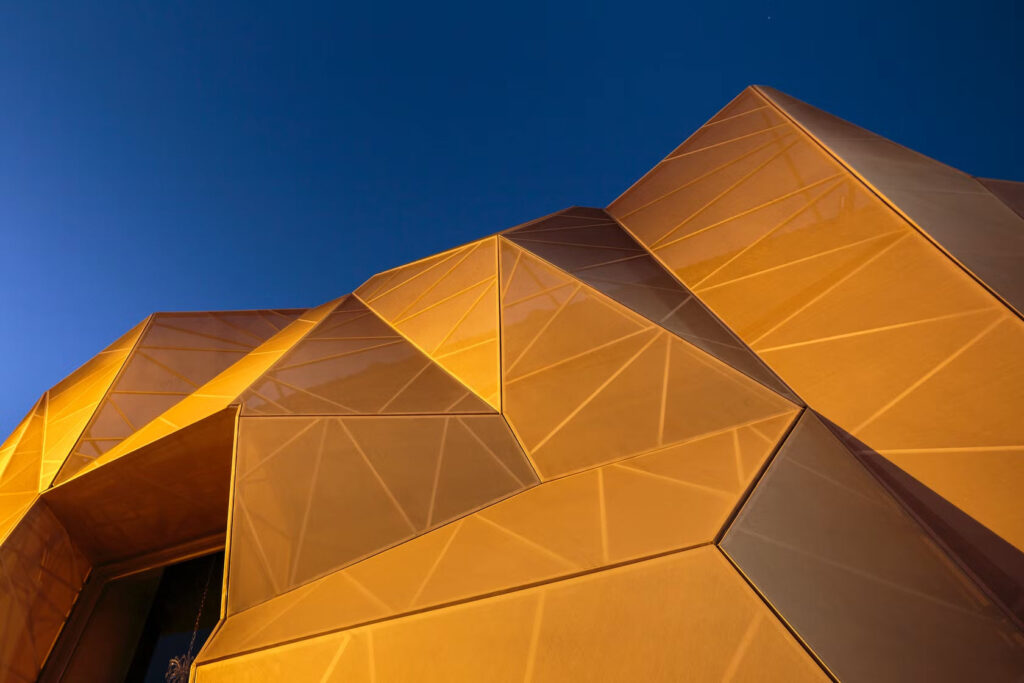
Results and Performance Evaluation
The application of Fabric Facade has proven to be superior in many aspects:
- High energy efficiency: Fabric Facade helps reduce the amount of heat absorbed into the building by up to 70% compared to glass facades, thereby significantly reducing operating costs for the air conditioning system.
- Improve the quality of interior space: Noise reduction, natural light regulation and passive ventilation create a more comfortable and pleasant living and working environment.
- Diversify architectural solutions: The flexibility in shape and color of fabric allows architects to create unique designs, from soft curves to complex geometric shapes, creating highlights for the project.
- Environmentally friendly: Fabric materials can be recycled, contributing to reducing construction waste and in line with the trend of sustainable green architecture.
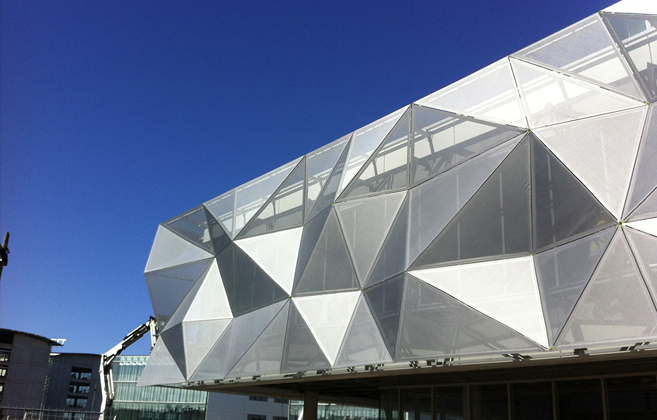
Contact Technical Consulting
Flexiiform is a professional consulting, design, and construction solution provider for Fabric Facade. With a team of highly qualified engineers and practical experience in large-scale projects, we are committed to providing the most optimal Fabric Facade solutions, meeting strict technical standards and high aesthetic requirements.
To receive detailed advice on Fabric Facade solutions for your project, please contact:
Flexiiform Company Limited
Website: https://flexiiform.vn/
Phone: 0867 868 830
Email: [email protected]


